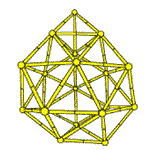Chemistry, Department of: Faculty Series

Barry Chin Li Cheung Publications
Document Type
Article
Date of this Version
January 2001
Abstract
Intramolecular junctions in single-walled carbon nanotubes are potentially ideal structures for building robust, molecular-scale electronics but have only been studied theoretically at the atomic level. Scanning tunneling microscopy was used to determine the atomic structure and electronic properties of such junctions in single-walled nanotube samples. Metal-semiconductor junctions are found to exhibit an electronically sharp interface without localized junction states, whereas a more diffuse interface and low-energy states are found in metal-metal junctions. Tight-binding calculations for models based on observed atomic structures show good agreement with spectroscopy and provide insight into the topological defects forming intramolecular junctions. These studies have important implications for applications of present materials and provide a means for assessing efforts designed to tailor intramolecular junctions for nanoelectronics.


Comments
Published in Science Vol. 291, no. 5501 (January 5, 2001), pp. 97–100; doi 10.1126/science.291.5501.97. Copyright © 2001 by the American Association for the Advancement of Science. Used by permission. http://www.sciencemag.org/cgi/content/full/291/5501/97